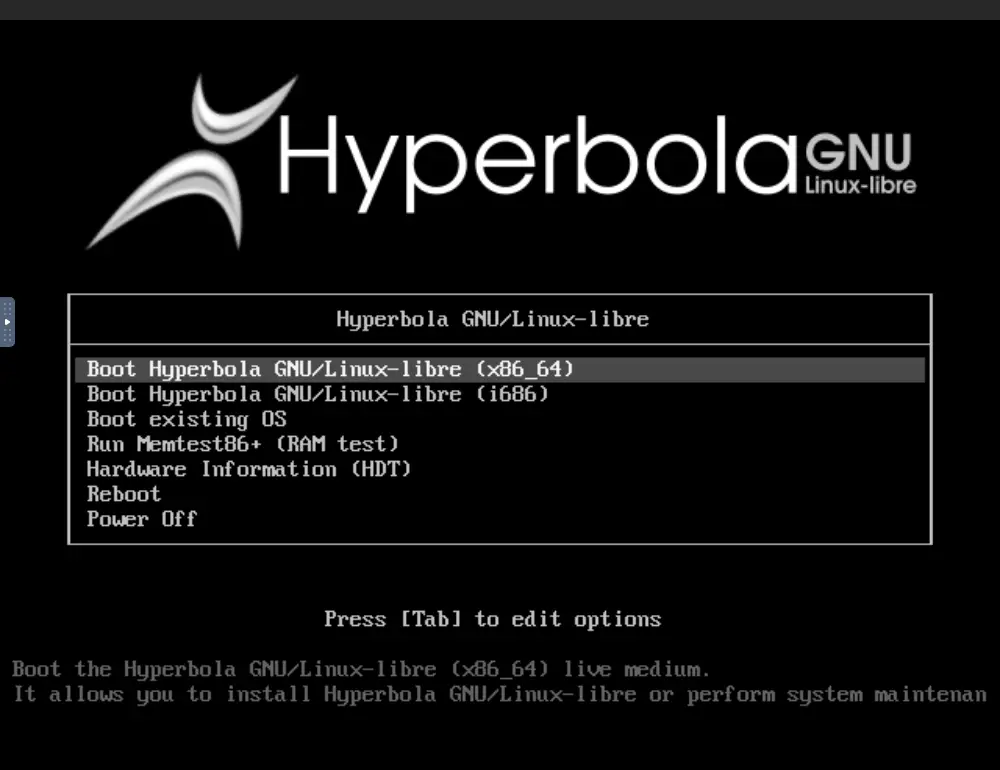The hyperbola Linux distribution is a new branch of GNU/Linux. The hyperbola project aims to be an up-to-date, fast, simple, and lightweight distribution with all the necessary software for a good computing experience while staying true to the principles of free software. In this blog post, we will take a look at what makes it different from other distributions and why you should consider giving it a try!
What is hyperbola Linux?

Hyperbola Linux is an operating system that aims to “provide a fast, stable and secure computing environment.” It is based on Arch Linux and Debian. It uses the Xfce desktop environment, which has a fast start-up time and low memory usage compared to other popular desktops such as GNOME or KDE.
The project began in 2012 with a discussion about making an open-source operating system more secure than Windows XP. The goal was not just security through obscurity but also by making it impossible for malware writers to find bugs in the code of Hyperbola’s programs that would be effective on Windows XP because they were already fixed in Hyperbola without providing any information on those fixes either publicly or privately. This is called “security by design.”
Since its inception, there have been hundreds of changes that have been made to Hyperbola’s programs which provide increased user privacy and protection from spyware and adware providers who want your personal data such as browsing habits, your search queries, and where you are located geographically.
Hyperbola also has built-in malware protection that is constantly updated by the developers of hyperbola Linux. The updates will never be installed automatically as it would take hours for a virus scanner to complete an update, but with Hyperbola’s “security by design” these updates occur in seconds.
Features of hyperbola Linux

Hyperbola is a Linux distribution that focuses on privacy and anonymity. It is an operating system based on the Arch Linux design, with various patches to include security-oriented features that make it ideal for people who need extra protection. The features of hyperbola include:
- Hyperbola Linux is a fork of Archlinux.
- Hyperbola has its own repositories, as well as the packages in AUR and repos such as Pacman.
- Hyperbola does not have systems, but instead uses OpenRC as its init system. It runs different services such as Avahi daemon or Xorg server in parallel to take advantage of all CPU cores available.
- The cache is built-in by default for faster compiling times and can be run as the root user to speed up builds on other machines.
- Hyperbola has a bigger focus on security and stability, especially when it comes to new software releases.
- Hyperbole uses rolling release model for updates.
- Hyperbola supports full disk encryption with LUKS out of the box. This means that if someone steals your computer or hard drive, then they will be unable to read anything on it unless they know your password.
- Hyperbola is more flexible in compiling the kernel than Archlinux.
- Hyperbola Linux includes additional packages for desktop environments such as Cinnamon, KDE, GNOME, etc.
- Hyperbola offers an installer called ArchLabs Installer and also includes the NoMachine desktop client.
- Hyperbola is available in many languages.
- Hyperbola Linux does not include firmware files.
- Hyperbola has a graphical installer
- It’s design philosophy: “Keep It Simple”
- It also uses more than just community-written software by default; there are some core “packages” that come with the system to enhance functionality, like Gnome or KDE. These two desktop environments can be switched between at any time from within the GUI environment (it doesn’t need to be done manually).
Hyperbola Linux vs Parabola Linux

Linux is a great operating system to use for your PC, but in order to have the best experience with Linux, you should choose the distribution based on what you need. The two most popular distributions are hyperbola and parabola. Hyperbola has more features than parabola, but it also takes up more hard drive space. Parabola is smaller and easier to install because it doesn’t include all of those extra tools that most people don’t use or know how to use anyway.
These are some differences between hyperbola and parabola:
- Both hyperbola Linux and parabola Linux come from ArchLinux, which is an operating system based on GNU/Linus Unix. Parabola mainly uses ASCII art while hyperbola mainly uses UTF-16.
- Hyperbola Linux is the derivative of ArchLinux, which mainly focuses on a pure and open source experience. At the same time, parabola Linux does not take care of these features as much, but does include a graphical installer with theming support.
- Hyperbola Linux has a better documentation and the community is more active.
- Hyperbola Linux does not come with any preinstalled packages or software. Still, it can be done manually by following instructions on how to do this, which are present in hyperbola’s wiki page. It also uses only one command-line utility called pacman instead of using AUR (Arch User Repository) like parabola Linux for installing programs from repositories that they have enabled; enabling them to be optional.
- Hyperbola Linux is a more open source and decentralized experience while parabola Linux focuses on the user’s privacy.
- Hyperbola Linux also has access to all the software available in Parabola but with better support and documentation so that anyone who wants to use it will not need help or workarounds set up before they start using this OS.
Downloading hyperbola Linux
You can download hyperbola Linux from a number of locations. The links below are direct downloads and will not open in your browser:
https://wiki.hyperbola.info/doku.php?id=en:main:downloads&redirect=1
Hyperbola Linux installation
Hyperbola Linux can be installed in multiple ways, and one of the easiest methods is to use a Debian-based live CD. A few options for these are Ulteo LiveCD or SysRescueLive (which has its own wiki page).
To install hyperbola Linux on your hard drive, you can use a USB stick or CD. If you are using a live CD, save any changes to the disk before removing it from the computer and restarting it with an installation media like the Ulteo LiveCD.
Final Words
Hyperbola is a Linux distro that could be the perfect fit for you if you’re looking to take your computing experience in a new direction. Whether it’s security, privacy, or customization options, this operating system offers something different than any other OS out there – and we think it sounds worth checking out!

